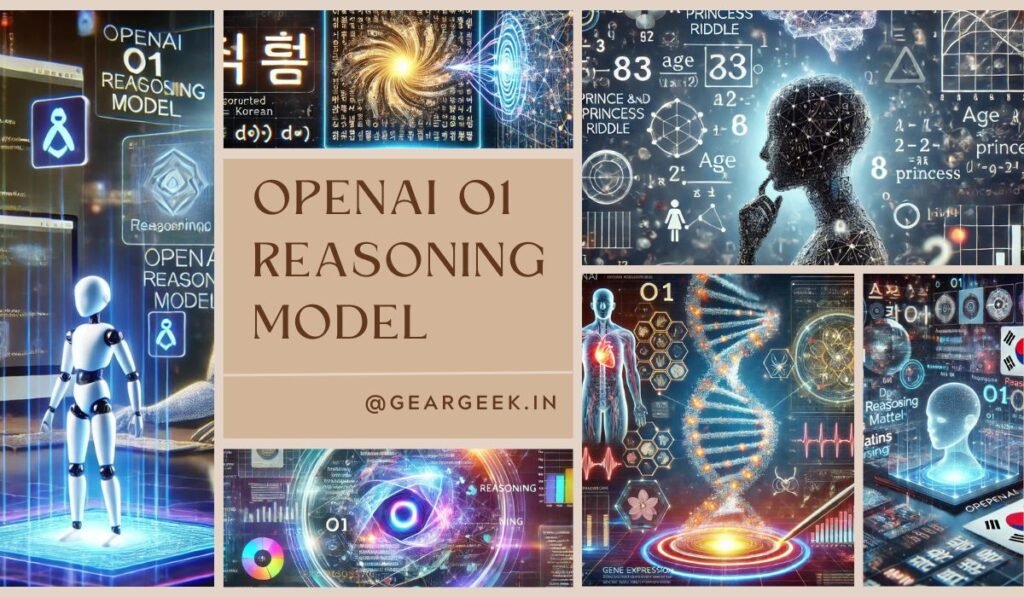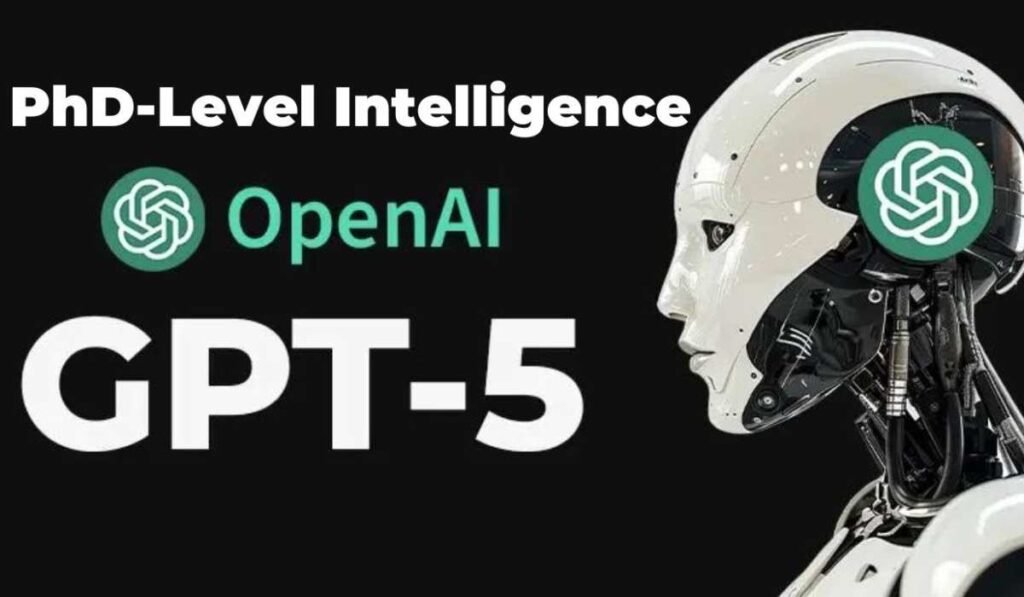The world of artificial intelligence is evolving at breakneck speed, and OpenAI’s latest launch of the O1 Preview and O1 Mini models has added a whole new dimension to AI-powered reasoning. These models aren’t just the next version of GPT; they represent a major leap forward in how language models think, respond, and reason. With their ability to process complex queries in real time, these models promise a more thoughtful and advanced AI experience.
Whether you’re involved in SEO, digital marketing, or general AI workflows, the introduction of these models could have a profound impact. But what do these models bring to the table, and should you consider adopting them? In this detailed guide, we’ll break down the key features, potential applications, and real-world performance of OpenAI’s O1 Preview and O1 Mini models.
Understanding OpenAI O1 Preview and O1 Mini
OpenAI’s Strategy Behind the New Models
The launch of O1 Preview and O1 Mini represents a shift in OpenAI’s approach. Until now, the GPT branding had become synonymous with its language models. However, with this release, OpenAI has deliberately dropped the “GPT” name, opting for a fresh identity for these advanced models. Internally, these models were even considered for a unique name, “Strawberry,” before user feedback highlighted issues with branding. As a result, the more neutral names of O1 Preview and O1 Mini were chosen, reflecting a different approach to AI development.
How These Models Differ from GPT-4
One of the most significant differences between O1 Preview and GPT-4 is the introduction of what OpenAI calls a “chain of thought process.” Instead of simply responding to prompts, these models take time to “think” and “reason” before generating a response. This means they don’t just regurgitate data but instead analyze and refine their answers based on logic and reasoning. This improvement makes them ideal for complex problem-solving.
Additionally, O1 Preview focuses on delivering high-quality, thoughtful responses, while O1 Mini offers quicker outputs, albeit with slightly lower quality. This trade-off between speed and depth gives users more control over their AI-powered solutions depending on their specific needs.
The Reason Behind Dropping the GPT Branding
The decision to move away from the GPT brand was partly due to a branding experiment gone wrong. When users discovered that the initial model name, “Strawberry,” failed simple tests like counting the “R” in the word “strawberry,” OpenAI decided to avoid the negative connotation. The result is a model name that’s not really a name, but instead, a fresh start for OpenAI’s evolving AI capabilities.
Key Features of O1 Preview and O1 Mini
Chain of Thought Process
The O1 Preview and O1 Mini models are based on a chain of thought processing system. This process allows them to analyze questions in greater depth and identify errors in reasoning. Unlike GPT-4, which provides a quick answer, these new models break down complex prompts into logical steps, providing more accurate and well-reasoned responses. This is especially useful for tasks requiring advanced reasoning, such as coding, legal document analysis, or SEO strategy generation.
Reasoning Tokens: A New Billing Mechanism
Another novel aspect of these models is the introduction of reasoning tokens. OpenAI’s billing for AI usage has traditionally been based on the number of tokens (words or characters) processed. However, with the O1 Preview and O1 Mini, the pricing structure now takes into account the complexity of the reasoning required. This new model enables OpenAI to charge based on how deeply the model needs to think about a query before delivering a response.
Performance Differences
The O1 Preview model provides top-tier quality but at the cost of speed. It takes longer to process queries, as it performs a thorough chain of thought analysis. In contrast, the O1 Mini offers faster response times but sacrifices some of the reasoning depth. For those requiring quick answers, O1 Mini is a suitable option, but for users who prioritize quality and advanced reasoning, O1 Preview is the go-to.
| Model | Response Time | Reasoning Depth | Best For |
|---|---|---|---|
| O1 Preview | Longer | High | Complex tasks, deep analysis |
| O1 Mini | Shorter | Moderate | Quick responses, everyday tasks |
Impact on SEO and Digital Marketing
SEO Use Cases: Meta Descriptions, Keyword Clustering, and Content Analysis
The AI community, particularly those in SEO and digital marketing, relies heavily on AI models like GPT-4 for keyword research, content generation, and content analysis. With O1 Preview and O1 Mini, these tasks can now be handled with even greater precision. The O1 Preview model is particularly suited for keyword clustering, where it can analyze a large number of keywords and group them into logical clusters based on semantic relationships. Similarly, the chain of thought process improves meta description and title generation, delivering more nuanced results that are tailored to search intent.
Advanced Reasoning for Complex Queries
Where GPT-4 provides quick responses, O1 Preview and O1 Mini go the extra mile by showing their thought process. This advanced reasoning capability is a game-changer for SEO experts who deal with complex, multi-layered queries. For instance, if you’re working on SEO content planning, these models can analyze topics at a deeper level, identify related terms, and recommend content strategies that are more comprehensive.
How O1 Preview and Mini Models Affect Workflow
For everyday SEO tasks like meta descriptions, GPT-4 still performs adequately. However, for tasks that require deeper analysis, such as keyword clustering or content audits, the O1 Preview model’s thought process feature may provide more insightful results. While O1 Mini may not offer the same depth, its speed makes it useful for repetitive or time-sensitive tasks, such as generating quick content ideas.
Efficiency vs. Depth in SEO Tasks
Here’s where the models differentiate the most. If your workflow requires fast results with a focus on efficiency, O1 Mini is your best bet. However, if your tasks involve detailed SEO audits, analysis, or strategy formulation, O1 Preview will shine, thanks to its reasoning capability.
Comparing O1 Preview and Mini with GPT-4
Reasoning vs. Speed: Which is Better?
When comparing GPT-4 with the O1 models, the difference lies in how they process information. GPT-4 quickly delivers results without delving into detailed reasoning. On the other hand, O1 Preview and O1 Mini think through their answers. While O1 Preview might take a little longer to respond, it provides a transparent process for how it reached its conclusion.
For example, in a test comparing reasoning abilities, both GPT-4 and O1 Preview were asked the same hypothetical question. While both arrived at the same answer, O1 Preview provided a breakdown of the thought process behind it, which can be useful for users looking for more detailed insights.
Is the Upgrade Worth It?
The question of whether to upgrade to O1 Preview or O1 Mini ultimately depends on your needs. If you’re a developer or marketer working on routine tasks, GPT-4 still performs well. However, for more advanced tasks that require in-depth reasoning and analysis, O1 Preview is a better fit.
Key Takeaways:
- O1 Preview excels in complex problem-solving, offering high-quality responses but at a slower speed.
- O1 Mini is faster but sacrifices some depth, making it ideal for routine tasks.
- For SEOs and developers, these models provide an extra layer of reasoning, offering more nuanced and insightful results.
- If your workflow depends on deep analysis, upgrading to O1 Preview might be worth the extra time and cost.
FAQs about OpenAI O1 Preview and O1 Mini Models
1. What are OpenAI O1 Preview and O1 Mini models?
The OpenAI O1 Preview and O1 Mini models are the latest advanced language models launched by OpenAI. They are designed to provide deeper reasoning capabilities by processing complex queries with a chain of thought approach. While O1 Preview offers high-quality, thoughtful responses, O1 Mini delivers quicker but slightly less detailed answers.
2. How do O1 Preview and O1 Mini differ from GPT-4?
The primary difference between O1 Preview and O1 Mini and GPT-4 lies in their reasoning process. While GPT-4 provides quick responses, O1 models use a chain of thought process to analyze and reason through queries. This allows for more insightful and well-reasoned responses, although O1 Preview takes more time than GPT-4 to generate answers.
3. What is the chain of thought process in O1 models?
The chain of thought process is a feature of O1 Preview and O1 Mini where the models think through each step of the query before delivering an answer. This means they reason, correct errors, and refine their thought process before generating a response, making them ideal for tasks requiring deeper analysis and logic.
4. What are reasoning tokens in O1 Preview and O1 Mini?
Reasoning tokens are a new billing mechanism introduced in O1 Preview and O1 Mini models. Instead of charging solely based on the number of tokens (words or characters) processed, these models take into account the complexity of the reasoning required to generate a response. This allows for more accurate pricing based on the model’s effort in providing a well-thought-out answer.
5. Are O1 Preview and O1 Mini better for SEO tasks than GPT-4?
For routine SEO tasks like keyword research, meta description generation, and content analysis, GPT-4 performs well. However, O1 Preview offers a more thoughtful approach to complex SEO tasks like keyword clustering and strategy formulation, thanks to its advanced reasoning. O1 Mini provides faster results for simpler tasks but may not be as effective for deep analysis.
6. How fast are O1 Preview and O1 Mini compared to GPT-4?
O1 Preview takes more time to process queries compared to GPT-4 because it performs deeper reasoning before delivering a response. O1 Mini is faster than O1 Preview but still slower than GPT-4, as it also incorporates some level of thought processing, though at a lower depth.
7. Can I use O1 Preview and O1 Mini for everyday tasks?
Yes, you can use O1 Preview and O1 Mini for everyday tasks, but their benefits are most apparent when dealing with complex questions or problems that require in-depth reasoning. For simpler tasks, GPT-4 or O1 Mini might be more efficient due to their faster response times.
8. Do O1 Preview and O1 Mini support file uploads and images?
Currently, O1 Preview and O1 Mini do not support file uploads or image prompts. They are focused on handling text-based inputs, making them ideal for tasks that revolve around language and reasoning.
9. Who should consider upgrading to O1 Preview and O1 Mini models?
If your work involves complex reasoning, problem-solving, or tasks that require deep analysis—such as in SEO strategy, coding, or research—you should consider upgrading to O1 Preview. However, if you are focused on speed and simpler queries, O1 Mini or GPT-4 may suffice for your needs.
10. Are O1 Preview and O1 Mini available for all API users?
No, O1 Preview and O1 Mini are only available to API users who have spent over $1000 in API billing. They are considered premium models that offer advanced reasoning and analysis capabilities, tailored for high-end users.
The OpenAI O1 Preview and O1 Mini models are advanced language models designed to provide deeper reasoning capabilities through a chain of thought approach. O1 Preview offers high-quality, thoughtful responses, while O1 Mini delivers quicker but slightly less detailed answers.
The primary difference lies in their reasoning process. O1 models use a chain of thought process to analyze and reason through queries, allowing for more insightful responses, whereas GPT-4 provides quick, less detailed answers.
The chain of thought process involves the models reasoning through each step of a query before delivering an answer, allowing them to analyze, correct errors, and refine their thought process for deeper analysis.
Reasoning tokens are a new billing mechanism that considers the complexity of reasoning required to generate a response, rather than just the number of tokens processed, enabling more accurate pricing based on the model's analytical effort.
For routine SEO tasks, GPT-4 performs well. However, O1 Preview provides a more thoughtful approach for complex tasks like keyword clustering and strategy formulation, while O1 Mini is suitable for faster, simpler tasks.
O1 Preview takes longer to process queries than GPT-4 due to deeper reasoning, while O1 Mini is faster than O1 Preview but still slower than GPT-4, as it incorporates some level of thought processing.
Yes, they can be used for everyday tasks, but their advantages are more pronounced with complex questions requiring in-depth reasoning. For simpler tasks, GPT-4 or O1 Mini may be more efficient.
No, currently O1 Preview and O1 Mini do not support file uploads or image prompts; they are focused on text-based inputs.
Those involved in complex reasoning, problem-solving, or in-depth tasks such as SEO strategy, coding, or research should consider upgrading to O1 Preview. For speed and simpler queries, O1 Mini or GPT-4 may be sufficient.
No, O1 Preview and O1 Mini are only available to API users who have spent over $1000 in API billing, as they are considered premium models offering advanced reasoning and analysis capabilities.





